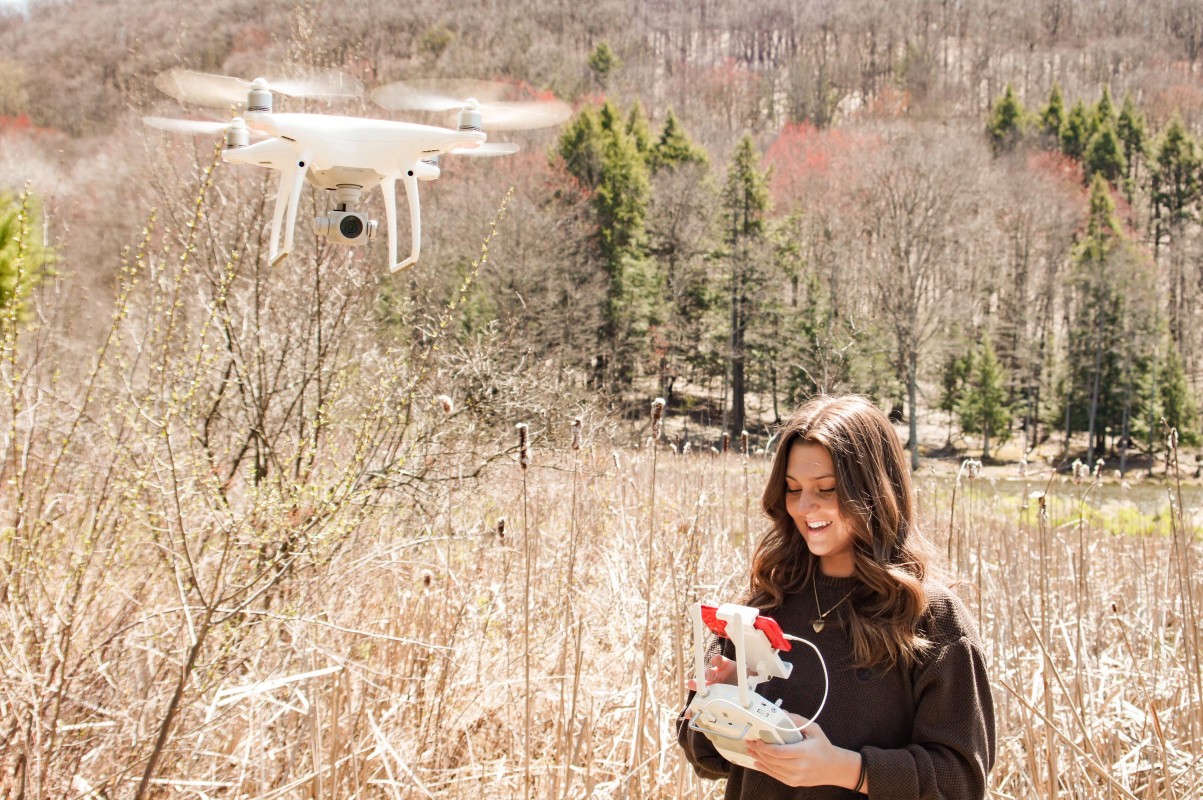Flight plan: Geophysics major receives NSF Graduate Fellowship
An FAA-certified drone pilot, Madison Tuohy finds her future in an interdisciplinary field

Technology is always evolving — with consequences both good and bad.
The production of landmines, for example, has shifted from metals to plastics, making them difficult to find with hand-held magnetometers. But a different kind of evolution — one that saw the proliferation of unmanned aerial vehicles (UAVs) and the miniaturization of sensor technology — may help counteract them.
Enter researchers such as Binghamton University’s Madison Tuohy, a senior geological sciences major with a concentration in geophysics. During her time at Binghamton, Tuohy focused on using a drone-mounted hyperspectral imaging camera to determine the location of these newer landmines. Every material has a spectral thumbprint that can be used to differentiate it from its surroundings, she explained.
“If we’re able to look at the spectral profiles of landmines and compare them to surrounding vegetation, dirt or gravel, then spectrally quantify the landmines for their location and type, we can improve the detection process and make it faster and efficient,” she said.
The Long Island native, who plans to earn a doctorate in geological sciences from the University of Arizona, is the only Binghamton undergraduate in 2023 to receive a National Science Foundation Graduate Fellowship. The five-year fellowship provides three years of financial support for graduate school, including an annual stipend of $37,000.
Starting in the fall, she will be conducting research in the University of Arizona’s Lunar and Planetary Laboratory, using UAVs to explore volcanic sites in Iceland and model lava flows. These sites serve as analogs to surfaces on Mars, she said.
Taking off
Tuohy first learned about the investigative potential of drones through the First-year Research Immersion program, where she was a part of the geophysics and remote sensing stream.
“I remember walking into the geophysics lab on the first day of class and seeing all these landmines throughout the lab. And I was like, ‘What in the world is going on?’” she remembered. “Immediately, I was captivated. The research coming from this lab can actually save thousands of lives and contribute to the bigger cause of humanitarian geophysics.”
She remained committed to the landmine-detection project during her entire time at Binghamton, but branched out into other areas of remote sensing, too. Last fall, she joined research teams in Louisiana and Missouri, the first time she was able to apply geophysics to archaeological research.
Along the way, Tuohy became a Federal Aviation Administration-certified drone pilot, capable of flying UAVs of all dimensions — from those small enough to fit in the palm of your hand, to massive units with six propellers.
An emerging field, geophysics isn’t just about airtime. In addition to earth sciences, the major involves a good deal of math, physics and theory, to understand how sensors work. Ultimately, it’s a highly interdisciplinary program, according to Tuohy.
“I’ve taken physics with engineers, I’ve taken geology with geologists and math with mathematicians,” she said.
Tuohy is the only woman graduating from Binghamton with a degree in geophysics. Initially, that was an intimidating prospect, but she hopes to someday inspire more women to explore science, technology, engineering and math (STEM) fields.
“The advisors in the geophysics lab were extremely helpful in helping me choose a career path and gave me plenty of opportunities to excel on the field,” she said.


